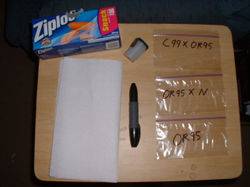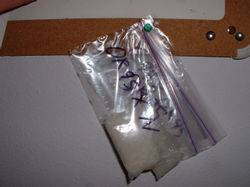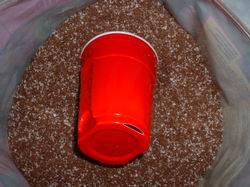G
Guest
I could have this conversation in a number of forums, but Im an outdoor grower and it's other outsiders that i seek to engage . Pot seeds are so expensive, and I see so many reports in forums about poor germination rates that I wanted to discuss this phenomenon.
Ive bought 117 packs of store bought seeds, from 11 different seed banks, but 80% came from 3 seedbanks. Of those seed packs, Ive recieved 1 pack of old seeds. I know of 2 other long time growers that report similar results. Its my sense that the overall seed market is relatively fresh and the odds of recieving a bad pack is 1 or 2 packs per hundred. 2% max. I count plants, not cracked seeds or runts, and Ive averaged 7.13 plants per pack over the years. Its my view that if you close your eyes and pick a 10 pack of seeds, there's a 96% chance you will get 7 plants from it. The seeds available on the market are generally good from my perspective.
I have a bunch of experience at germination. I grew up on a tobacco farm and tobacco has many similarities to cannabis. Seedlings must be started and transplanted and mould is your greatest enemy. We started our own tobacco seedlings, 250,000 per year, and by the time I was 18, I had started millions of seedlings. I know how to start seeds and what makes them grow.
When I started growing pot, I just transfered the knowledge and experience I already possessed. That knowledge consisted of the following:
Seed germination requires
1. Moisture- not too much, not too little
2. Temperature- Critical. No shows and runtsville.
3. Light stimulation. Unless your trying to grow eyes on your potatoes, darkness plays no role in seed germination. Most plants grow in the light.
When these 3 components are provided, seeds respond as they have been programmed to do for millions of years. Implentation of these components will always result in good germination rates and plant health.
Perhaps you can imagine my suprise years ago, when I began reading the recommendations of cannabis authorities for germination as soaking seeds in water or paper towels, IN THE DARK!! of all places, and it's not unusual to see the method suggested today and of growers using it. There is rarely a single mention of of temperature, no mention of light stimulation even though both issues are everybit as critical as moisture..
Its my contention that the paper towel method or any method that doesnt emphasize moisture, temperature control and lighting is lacking critical components. Grower luck and skill notwithstanding this approach will never result in high/consistent germination rates of healthy plants. While many report good results with this terribly flawed approach, its due to human determination to succeed even under less than perfect circumstances, not because its a good way to start seeds.
Im interested in the view of others.
Ive bought 117 packs of store bought seeds, from 11 different seed banks, but 80% came from 3 seedbanks. Of those seed packs, Ive recieved 1 pack of old seeds. I know of 2 other long time growers that report similar results. Its my sense that the overall seed market is relatively fresh and the odds of recieving a bad pack is 1 or 2 packs per hundred. 2% max. I count plants, not cracked seeds or runts, and Ive averaged 7.13 plants per pack over the years. Its my view that if you close your eyes and pick a 10 pack of seeds, there's a 96% chance you will get 7 plants from it. The seeds available on the market are generally good from my perspective.
I have a bunch of experience at germination. I grew up on a tobacco farm and tobacco has many similarities to cannabis. Seedlings must be started and transplanted and mould is your greatest enemy. We started our own tobacco seedlings, 250,000 per year, and by the time I was 18, I had started millions of seedlings. I know how to start seeds and what makes them grow.
When I started growing pot, I just transfered the knowledge and experience I already possessed. That knowledge consisted of the following:
Seed germination requires
1. Moisture- not too much, not too little
2. Temperature- Critical. No shows and runtsville.
3. Light stimulation. Unless your trying to grow eyes on your potatoes, darkness plays no role in seed germination. Most plants grow in the light.
When these 3 components are provided, seeds respond as they have been programmed to do for millions of years. Implentation of these components will always result in good germination rates and plant health.
Perhaps you can imagine my suprise years ago, when I began reading the recommendations of cannabis authorities for germination as soaking seeds in water or paper towels, IN THE DARK!! of all places, and it's not unusual to see the method suggested today and of growers using it. There is rarely a single mention of of temperature, no mention of light stimulation even though both issues are everybit as critical as moisture..
Its my contention that the paper towel method or any method that doesnt emphasize moisture, temperature control and lighting is lacking critical components. Grower luck and skill notwithstanding this approach will never result in high/consistent germination rates of healthy plants. While many report good results with this terribly flawed approach, its due to human determination to succeed even under less than perfect circumstances, not because its a good way to start seeds.
Im interested in the view of others.
Last edited:


 kind regards from guineapig
kind regards from guineapig 














